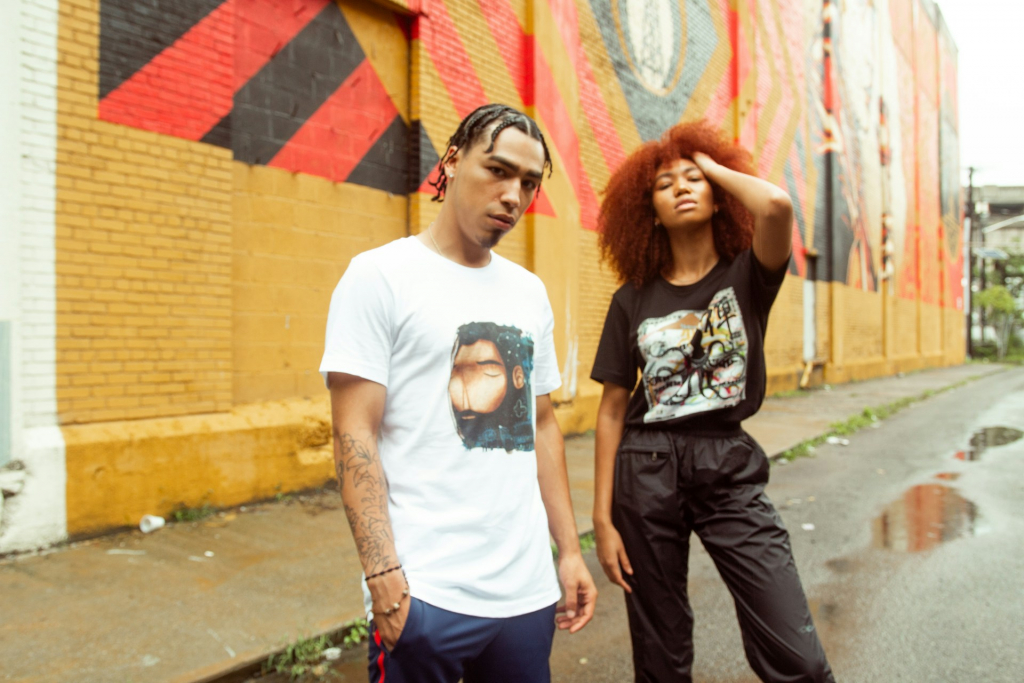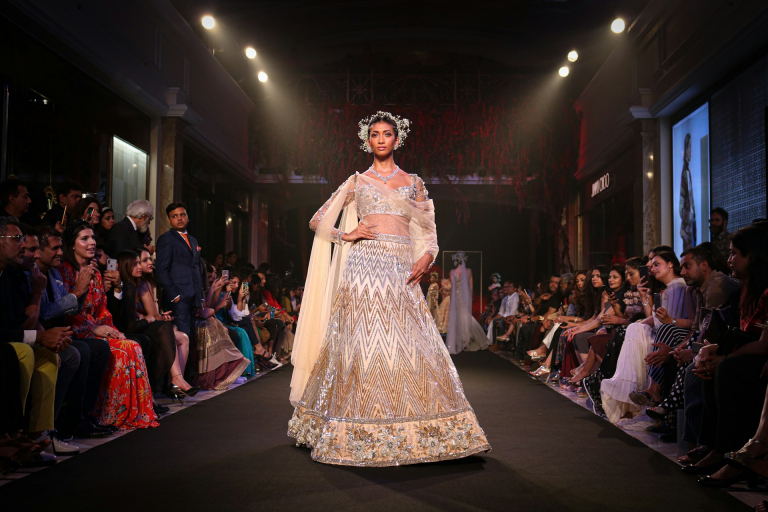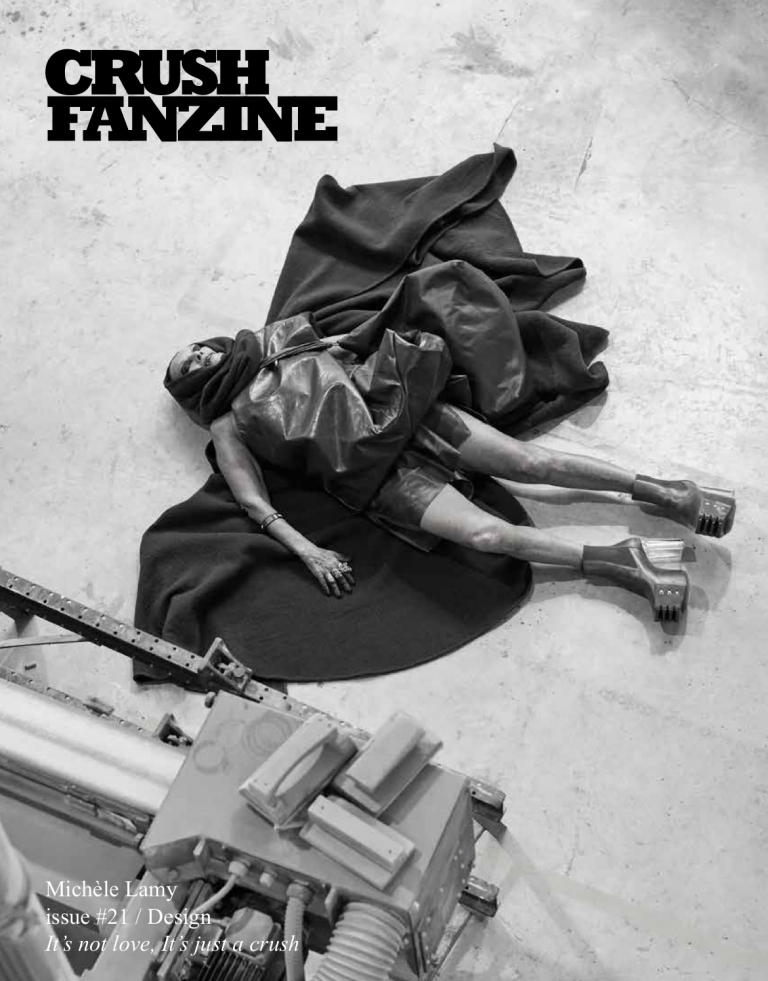In a general way of speaking, street fashion is a combination of casual and unconventional clothing.
The history of street fashion is very interconnected with authenticity and works as a facilitator of cultural identity. This means that it does not necessarily follow a current fashion trend but emphasizes individualism more.
Street fashion shows people ways of expressing themselves and having cultural influences. It helps individuals communicate with others about who they are. Let’s look further into the history of street fashion.
THE HISTORY OF STREET FASHION: A DEEPER LOOK INTO.
Street fashion became known worldwide around 1990 and spread between 1970 and 1980. But if you look deeper, it goes way back to the end of the Second World War.
Christian Dior, French fashion designer and the founder of one of the world´s most famous fashion houses, had a big influence on the history of street fashion when he created the “New Look,” a long circular skirt and a tailored jacket with broad shoulders and a tapered waist.
The history of street fashion has evolved from a general social practice adopted by certain socio-cultural groups into an important segment of the mass fashion industry. This process has been very long and has been accompanied by extensive social, cultural, and economic changes.
Afterward, the history of street fashion had a lot of influence. It was deeply inspired by hip-hop fashion and the Californian lifestyle, with a mix of the punk area, new wave, heavy metal, Japanese street fashion, and some elements of sportswear.
The combination of those elements formed what we know as Street Fashion or Streetwear.
Harajuku, a district in Tokyo, played a pivotal role in the development of the history of street fashion, especially in Japan. The eclectic street style became synonymous with self-expression and youth. Young people displayed their individuality through some very bold fashion choices.
In the 1970s, the punk scene took over, and world-renowned fashion designer Vivienne Westwood pioneered the punk rock style. The fashion designer opened her first store in 1971 with her partner Malcolm McLaren on the famous King’s Road in London. Regulars at the store formed the band Sex Pistols, and she took charge of the costumes, defining what would later become the punk rock style.
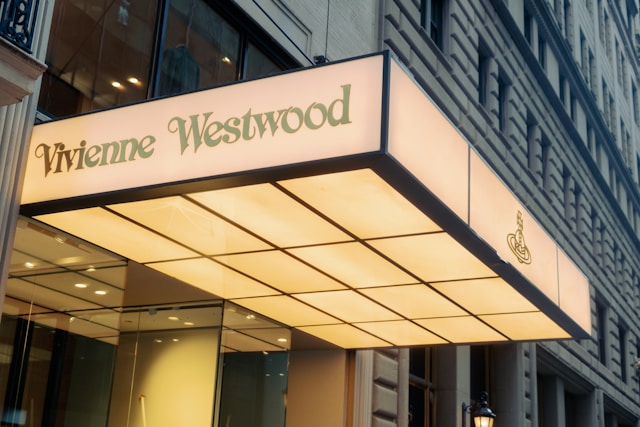
In the late 1980s, Surfboard designer Shawn Stüssy changed the history of street fashion when he started printing T-shirts with the same signature he used to customize his surfboards. The pieces turned out to be extremely popular, so he switched to very exclusive sales, introducing the product scarcity concept, which is when a product or service has limited availability, driving up the prices.
In the midst of the 1990s, sports teams, such as the notable New York Yankees, Los Angeles Riders, and Chicago Bulls, started to capitalize with their oversized jacket, cap, and shoe design by Nike, INC.
During this time, record labels became associated with hip-hop culture and began to profit from this as well.
Here is a list of a few fashion designers that changed the whole scenario of Streetwear:
- Dapper Dan
- Vivienne Westwood
- Shawn Stüssy
- James Jebbia
- Hiroshi Fujiwara
THE SOCIAL IMPACT CAUSED BY STREETWEAR
The idea of street style can spark the feeling of not being conformed. From the beginning of the history of street fashion, it’s clear the idea of owning your individuality and not following society’s patterns.
The Suffrage Movement, which occurred from 1840 to 1920, was extremely significant when it came to equal social rights for women, and they used fashion as a statement. During the movement, women started to wear pants, which was totally against society’s patterns at that time.
When we talk about movements like this in the history of street fashion, we can’t forget about the Black Panthers Party. In the late 60s, Bobby Seale and Huey P. Newton founded this movement to fight racial discrimination. They protested for Black Pride and fashion liberty by wearing a black leather jacket, black pants, dark sunglasses, and a black beret.
Jumping to a more recent time, several initiatives have marked the history of street fashion, such as the collaboration between the high luxury street fashion brand Off White and the Black Lives Matter movement in order to fundraise support for the family of George Floyd, an unarmed African American whom a white police officer murdered, Derek Chauvin, in 2020.
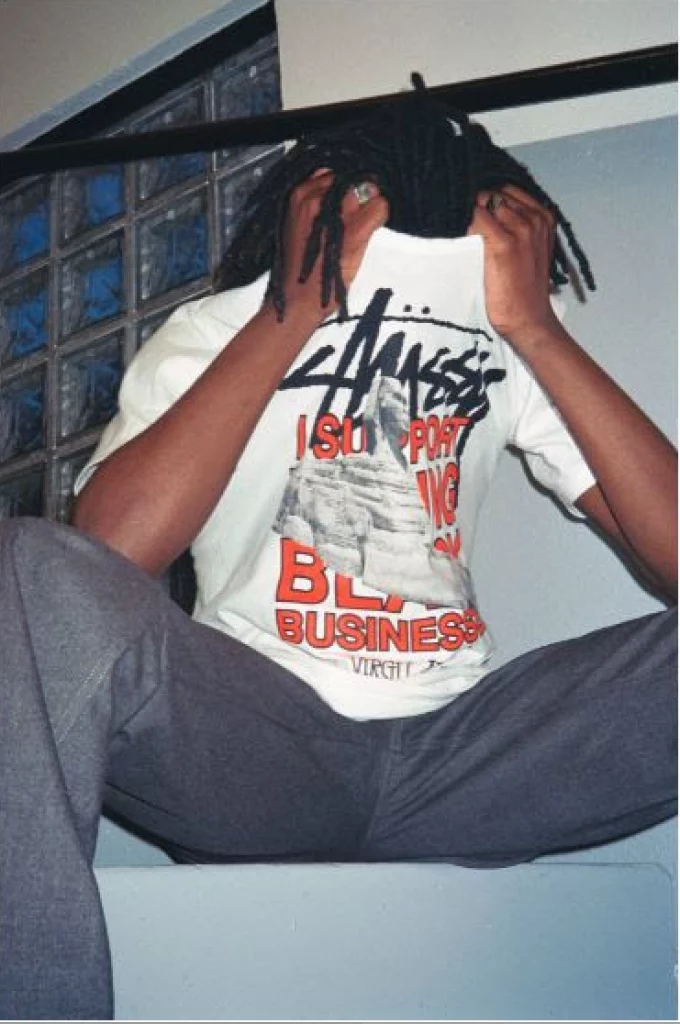
The LGBTQIA+ community and its style have also prompted people to embrace more colorful, vibrating clothing, changing forever the history of street fashion. T-shirts printed with rainbows and gender-neutral clothing are statements of freedom and individuality.
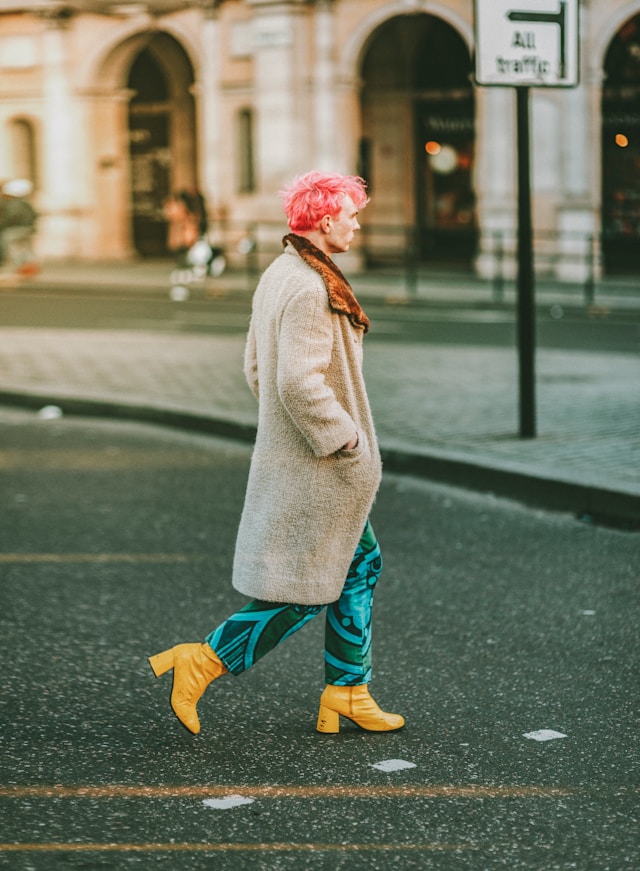
What stands out about streetwear is its unique gift of bringing people together under a message that needs to be spoken. To wear something is to make a statement, especially when it comes down to street fashion.
Want to learn more about the relevance of street style? Check out this article:
Street Style and Its Importance For Social Movements
STREET FASHION X LUXURY
Luxury brands, often still seen as symbols of exclusivity and sophistication, have become a big part of the history of street fashion and explored collaborations with streetwear labels, creating a new market called ‘luxury streetwear.’ The difference lies in the quality of materials and craftsmanship, with a sprinkle of streetwear’s rawness. Think of it as the fusion of street style and high-end fashion quality.
With the rise of urban artists within the luxury fashion industry, such as Pharrell Williams at Louis Vuitton or Nigo at Kenzo, the influence of streetwear fashion over luxury brands became evident.
However, to talk about Street luxury, we need to mention Dapper Dan, a North American fashion designer from Harlem, New York. Dapper Dan can be considered the godfather of street luxury and definitely the king of “knockoffs.”
After returning from a trip to Africa, he became interested in fashion and founded his 24-hour store in 1982. He gained a lot of recognition in the late 1980s, crafting his signature with gangster-inspired style. He had a unique made-to-order customization model and had clients that included rap stars, athletes, and gamblers such as LL Cool J, Mike Tyson, and James Jackson.
The blastoff of street luxury culture welcomed established luxury brands like Burberry, Gucci, and Fendi into the market. These brands made appearances in Hip-Hop music videos. A product that was immortalized during this period was the Nike Air Force 1, which emerged as the iconic footwear of the era, as shown in Nelly’s video.
Another notorious fashion designer who elevated the concept of street luxury fashion is Virgil Abloh.
He was known for his work as Menswear Creative Director at Louis Vuitton and Chief Executive Officer of his own luxury streetwear brand, Off White. Unfortunately, he died of cancer at 41 after privately battling the disease for several years.
If you want to know more about Virgil Abloh and his luxury street brand Off-White, check out this article: Off-White: The Story of a Luxury Streetwear Pioneer – Fashinnovation
The combination of streetwear and luxury has produced exceptional results in the industry. Luxury companies can maintain their exclusivity but reach a more broad-ranging audience.

According to the website Disco, here are the TOP 26 Luxury Street Fashion Brands:
1. Supreme
2. Heron Preston
3. Balenciaga
4. Off-White
5. A-COLD-WALL
6. Aimé Leon Dore
7. Vetements
8. Auralee
9. Fear of God
10. Acne Studios
11. Yohji Yamamoto
12. Rick Owens
13. Alexander Wang
14. Alexander McQueen
15. Comme des Garçons
16. Raf Simons
17. Alyx
18. Junya Watanabe
19. 1017 ALYX 9SM
20. Helmut Lang
21. Issey Miyake
22. Undercover
23. Dries Van Noten
24. Jacquemus
25. Martine Rose
26. Bally
The fusion of these two-way perspectives continues to captivate fashion enthusiasts, redefining the parameters of what fashion can look like. There is a constant, ever-evolving dynamic between street fashion and luxury.
A “GREENER” WAY OF STREET FASHION
While becoming a global phenomenon, streetwear faces an issue that can not be overlooked, especially nowadays: environmental degradation.
The fashion industry is one of the biggest contributors to climate change and, consequently, street fashion as well. From the production processes to the final product, this industry is a major leaguer in environmental degradation, resulting in water pollution, chemical waste, and a huge carbon footprint.
This need for a more sustainable way of making fashion has led to a new breakthrough in the history of street fashion, represented by the buildout of eco-friendly streetwear brands. Brands are migrating to eco-consciousness textile options, such as recycled plastic, organic cotton, and bamboo.
As a fashion designer, think about how you can contribute to making the industry environmentally friendly. So, to clarify this process, here is a list of eco-friendly fabrics:
Natural Sustainable Clothing Fabrics (Vegan):
- Organic Cotton
- Recycled Cotton
- Hemp
- Linen
- Bamboo Linen
- Cork
Recycled Synthetic Sustainable Clothing Fabrics (Vegan):
- ECONYL®
- Recycled polyester
- Deadstock
Sustainable Semi-Synthetic Clothing Fabrics (Mostly Vegan):
- Lyocell
- Modal
- Bamboo Lyocell
- ECOVERO™
- Piñatex
- Bananatex®
- SCOBY Leather
- S.Cafe®
- Brewed Protein
- Apple Leather
- Woocoa
- Cupro
- QMilk
Potentially-Sustainable Natural Animal Fabrics (Non-Vegan):
- Sheep Wool
- Merino Wool
- Alpaca Wool
- Cashmere
- Camel
- Yak Wool
- Vegetable Tanned Leather
- Down
- Silk
Want to dig deeper? Check out this article from Sustainable Jungle
Having the possibility to bring innovation to the streetwear “world,” models such as circular economy are being adopted.
Consumers also play an important role in ensuring the sustainability of streetwear. By choosing to buy sustainable brands, they can create demand for environmentally friendly products, which in turn encourages more brands to adopt sustainable practices.
Consumers can also make a difference by recycling or donating their clothes to charity instead of throwing them away.
Here are some sustainable streetwear fashion brands to watch out for:
- Stüssy
- VEJA
- Palace Skateboards
- Outerknown
- WAWWA
- Plant Faced
- Universal Works
- Noah
Sustainability and Street Fashion can go hand in hand and make a “greener” fashion.
CAN I AFFORD STREETWEAR?
Nowadays, with the introduction of streetwear in the luxury fashion market, customers have become concerned with the prices. Is street fashion no longer affordable?
Making street fashion exclusive and sustainable can prove to be very expensive. And if you think back to the beginning of the history of street fashion, the whole concept was less cost-effective.
In spite of that, there were some more light-budget ways of being able to have a street style:
1—With the increase of sustainable ways of making the fashion industry more “clean,” the augmentation of thrift stores has been unprecedented. According to the Cambridge Dictionary, thrift stores are stores selling secondhand clothes and other household goods, typically to raise funds for a charitable institution.
2—Getting creative is a huge part of street fashion’s story. With access to a pair of scissors and YouTube videos, you can Do It Yourself (DIY).
3- A recent viral trend of making streetwear more affordable on a low budget is clothing rental. In addition to being cheaper, it is a very eco-conscious way of thinking.
Here is a list of links for rental websites where you can find street fashion:
FAST FORWARD TO THE FUTURE OF STREET STYLE
The future of street style is exciting and full of possibilities. From up-and-coming designers to established brands, the potential to explore is huge. It lies in nurturing collaboration and community to create a more vibrant and diverse fashion industry.
Editor Nav Gill of Hyperbae’s words were fresher than ever when he said:
“Streetwear has always been of the moment. Will there continue to be a burst of high-end brands producing massive oversized hoodies? Maybe. At the end of the day, fashion has its moments with what they think is cool at the time. Of course, it might get oversaturated and then not cool anymore. It might then go back to the streets, and people might start their small streetwear brands again. And it’ll come back around again.”
Nav Gill – Hyperbae
If there is one thing we can all learn from the history of street fashion, it is that adaptability is a huge part of it.
Whether buying from a luxury brand, browsing thrift stores, or getting crafty by yourself, street fashion has the power to communicate, and the story behind it will continue to echo throughout history and pass on to the next generations of street fashion lovers.
